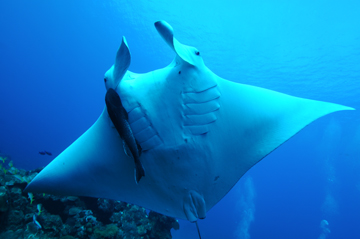300713remora.jpg

Remoras have a specially adapted dorsal fin that lets them latch on to other animals. Credit: National Oceanic and Atmospheric Administration
Most anglers have to wait for the fish to come to the bait. But there’s one type of bait that does the work for them: the remora. In some countries, fishermen attach a line to the remora’s tail and toss it in the water. The remora seeks out a big fish, shark, or turtle, latches onto it, and the angler slowly reels them both in.
Remoras are found in tropical waters around the world. They don’t spend much time actually swimming in those waters, though. Instead, they latch onto some larger animal. They then cruise along as passengers. They feed on tiny parasites on the skin of their hosts, or on scraps left over from the host’s meals.
The remora attaches itself with a specially adapted dorsal fin. Recent research shows that when a remora hatches, the fin resembles that of any other fish, sitting near the middle of its back. As the remora develops, though, the fin moves toward the head, and it flattens out. It soon forms a disk-like pad that’s surrounded by a thick rim, which in turn encloses two rows of structures that are similar to teeth.
The “teeth” anchor the remora to its host, while the rim forms a tight seal around them. Once the remora is attached, it doesn’t have to exert any extra energy to stay hooked on — it’s automatic.
Scientists at the Georgia Tech Research Institute are studying this structure in detail. Their work could lead to better bandages, new ways to attach medical sensors, and even sticky pads to serve as the feet of climbing robots — all thanks to a hitchhiking fish.

